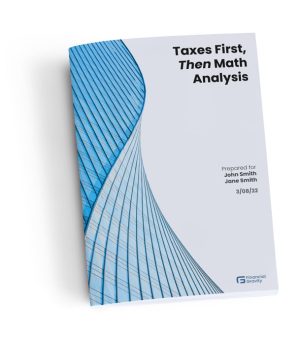The American education system does not spend much, if any, time teaching young people how to manage their financial affairs. Only 22 states have a personal finance requirement for high school students, and the curricula are not going to produce the next generation of Warren Buffets. The focus is on things like creating a spending budget and managing debt.
Only one in ten high school graduates is taking a personal finance class before they graduate. Is it any wonder that 37% of American retirees have zero savings, and only about 12% have a half million or more saved for their golden years?
Building real wealth is hard, and the confusing and often contradictory advice provided by the many thousands of firms and millions of insurance, banking, and brokerage professionals can make it even harder. Balancing a checkbook is one thing, but how is a person to understand the arcane world of asset allocation, diversification, and modern portfolio theory?
The financial services industry is a behemoth, contributing $2 trillion, or 7.4%, annually to GDP. There are over 539,000 insurance and finance firms, and they added over $3.5 trillion to the US economy in 2022. Yet they really don’t do all that much for their customers: year after year, the average American fund investor lags the popular indexes, like the S&P 500 and the Barclays Aggregate Bond Index.
How bad is that underperformance? It’s difficult to overstate the failure, but consider this: in the 30-year period from the beginning of 1987 through 2016, the average American equity fund investor averaged a nominal return of 2.6% per year, while the S&P 500 produced a 10.2% annual return in the same period.
In real terms, that average investor, exposed to all the risks of the stock market, beat inflation by a razor-thin margin. They got, essentially, nowhere. $100,000 put into the S&P 500 at the beginning of that period would have grown to over $1.8 million, yet that average investor would have ended with just $216,000. In real (after inflation terms), assuming a 2.5% average inflation rate in the period, they made about six thousand bucks.
To be sure, the industry has a heavy lift. For one thing, they are responsible first to their shareholders, not their customers. And second, and perhaps much more important, human beings are a mess, subject to all kinds of behavioral biases that make investing very difficult for them.
Three Terms You Really Should Know
We can’t transfer all the knowledge of a professional money manager in a blog, but we can do something that may be just as valuable: we can introduce three essential concepts of money management and help you learn how to evaluate and select an advisor who can help shepherd your wealth.
Think of it like medicine. You aren’t going to go to medical school, but you will need a doctor. Many advisors don’t go to the equivalent of medical school; most just go to sales school. It’s wise to have some basis to judge their competence and value.
An understanding of beta, alpha, and gamma may be all you need to get and stay on track. In and of themselves, they are not terribly difficult things to understand, but they form the core of performance management evaluation in the industry, and you will be well served to become familiar with them.
Beta measures the price movement over time, or volatility, of a given stock relative to the broader market, which is generally considered to be the S&P 500. There are many indexes besides the S&P: there are small caps, mid caps, small/mid caps, and even the total market. And there are international and emerging markets. To make it even more complex, there are blended indexes, too. But beta is always contextual; it measures the deviation from a standard, a benchmark, or an index, which are all interchangeable terms.
The beta of the S&P 500, or of any index, is 1.0. An individual stock that is more volatile than the index will have a beta above 1.0; one that is less volatile will be below 1.0. A high-flying tech company may have a high beta; a utility company will likely have a very low one. This is a key concept, as high betas are considered to have higher return potential. You would expect Apple or Tesla to outperform Duke Energy or PG&E over time.
So here is the basic definition: beta is a measure of risk or volatility, and it’s a relative term. More risk is intended to produce more return, but more risk also means the potential for loss is greater.
You may have heard the term “smart beta.” Smart beta simply means using weighting, or blending, of things like value versus growth, cap ranges, or momentum to achieve an overall or systematic beta intended to compete with the broader market. It is essentially using asset allocation in a packaged form to produce what appears to be an attractive risk/return posture.
While beta measures the differences in volatility between a stock and its benchmark, alpha measures the performance, or active return, difference between a stock and its benchmark. Beta seeks to explain risk variance, but alpha measures return variance. In other words, alpha shows you if that adjusted risk produced the desired return.
Alpha is sometimes referred to as “excess return.” But you should bear in mind that excess is sometimes negative. And you should also understand that it’s virtually impossible to produce positive alpha in all time periods. A world champion alpha producer is Amazon, now one of the world’s largest companies. Amazon has produced a compound annual growth rate above 30%, but at one point, the stock was down more than 90%.
Actively managed mutual funds generally seek to produce positive alpha, but as a rule, most fail. According to Finax, fewer than 10% of U.S. actively managed mutual funds have outperformed the S&P 500 over the past 20 years. Bear in mind that a simple and straightforward investment in an S&P 500 index ETF would have produced nearly exactly the return of the index, done so with no turnover, and created a long-term capital gain. In that case, the beta would have been preferable to the alpha. It often is; see the sorry 30-year story referenced above.
There are alpha strategies that give a long-term investor a fighting chance, but investors should carefully consider them. As a rule, those strategies focus on long-term secular trends—put your money in automobiles, not buggy whips, for example—and align themselves with select companies noted for their competitive advantages. To understand competitive advantages, you might want to look up Porter’s 5 Forces, developed by Michael E. Porter of the Harvard Graduate School of Business.
The third, and in many ways most important term of art you would be well served to learn, is gamma. Gamma is sometimes used as a term in options pricing, but for our purposes, Morningstar has a useful definition: gamma is “the additional expected retirement income achieved by an individual investor from making more intelligent financial planning decisions.”
Here’s a rhetorical question: is there anything more valuable to an investor than additional retirement income? Is there some other, more important consideration? Alpha and beta are interesting and useful, but you can spend gamma.
Gamma may be thought of as a different kind of alpha or excess return, although not derived from investments, but from planning, advice, and practices. Gamma can be very tough to come by for an investor managing their own affairs. While certainly not impossible, gamma gets a lot easier to come by with professional advice, technology, and routine process automation.
Gamma is Where Value Gets Added
Vanguard, one of the world’s largest asset managers, has done some solid work quantifying gamma, or the value of advice, which they refer to as “advisor’s alpha.” Some categories of gamma generation are more difficult to quantify than others, but a positive contribution still can seem intuitively obvious.
Suitable asset allocation is one of the most difficult things to quantify because “suitable” means different things to different people. The right asset allocation seeks to produce a result that simultaneously meets the goals of the client and produces volatility that the client can live with. Vanguard can only say that this category of gamma is “deemed significant.”
Cost-effective implementation is credited with 0.3% typical added value. Thirty basis points, or 3/10ths of one percent, may not seem like a lot, but it will produce more retirement income over time. All things being equal, lower costs mean more money at work compounding for the client.
Rebalancing the portfolio is estimated by Vanguard to produce an additional 14 basis points of annual expected return. This is incremental, but it’s something that is hard for the typical investor to do on their own in a disciplined way.
Vanguard credits asset allocation with zero to 60 basis points of additional return per year. The math here gets pretty intense, but the right asset allocation will create what is known as an “efficient frontier,” where the diversification among asset classes reduces risk drag and, therefore, increases compounding. This is arcane stuff, but it’s a core discipline among institutional money managers.
Spending strategy, more properly known as “withdrawal order,” is a big one: It can increase up to 1.2% per year. This alone can justify an advisor’s annual advisory fee. If you have an advisor, you might want to ask them to explain their approach.
Some advisors and financial planners build portfolios around income generation, harvesting dividends on stocks and interest on bonds to create income for their clients. However, a focus on total return has been shown to produce gamma. Like suitable asset allocation, this one is unique to each investor, but is also deemed significant.
Finally, we come to the area where a great advisor can add the most value: behavioral coaching. Building trust through transparency and skill, an advisor can help their client develop the patience and discipline that are absolute requirements for investing success. Vanguard has estimated that this may be worth up to 2% per year, which is a game-changing level of gamma.
Taken together, all of these activities can produce up to or exceed 3% per year of the advisor’s alpha. Think of it this way: the return on a 1% advisor fee could produce an ROI that far exceeds that of any investment the investor might otherwise make in a diversified portfolio.
There is one other gamma-producing contribution an advisor can make for their client: tax efficiency. A combination of low-turnover, loss harvesting, and asset location strategies can produce another 2% per year of gamma, in the opinion of Financial Gravity.
Gamma is where the real money is for most investors, and those who understand it and work with advisors who can deliver it are likely to have a massive advantage over those who do not.









